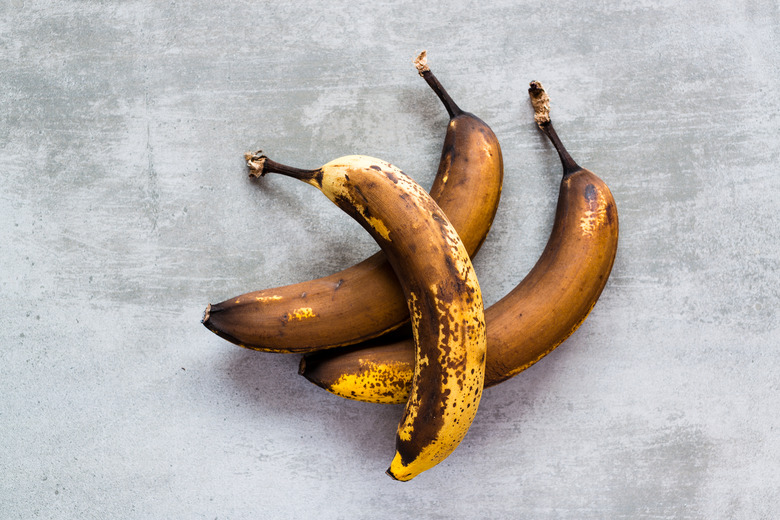The Effects Of pH On Catechol Oxidase
Enzymes possess a defined three-dimensional structure. Any change in this structure causes a change in the enzyme's activity. The pH of the reaction mixture modifies this structure and therefore, the activity. Every enzyme has an optimum pH where it shows maximum activity. Significant differences from this pH cause changes in the enzyme's three-dimensional structure that reduce its activity. Catechol oxidase enzyme has an optimum pH of about 7.
About Catechol Oxidase
About Catechol Oxidase
Catechol is oxidized by catechol oxidase in the presence of oxygen to form benzoquinone, which, on exposure to air, forms melanin. This enzyme is also known by other names, such as tyrosinase, diphenol oxidase and polyphenol oxidase. Potatoes, apples and bananas contain catechol oxidase which acts on colorless catechol and converts it to brown-colored melanin. The browning that occurs when you cut and expose these items to air is a result of this reaction.
Extraction of Catechol Oxidase
Extraction of Catechol Oxidase
Catechol oxidase may be extracted from bananas or potatoes. Mash a banana with twice the volume of water in a mortar and pestle. Alternatively, blend a banana with water to obtain the catechol oxidase extract. Filter through butter muslin and store in the refrigerator. If you use potatoes, peel and chunk them, then blend at a high speed using 700 ml of cold, distilled water. Filter this potato juice through cheesecloth and refrigerate.
Experimental Details
Experimental Details
Prepare buffer solutions with pH values 2, 4, 6, 7 and 8. Label five test tubes with these pH values. Fill each tube to one-fourth capacity with the respective buffer. Add 10 drops of catechol oxidase extract into each of these tubes, followed by 10 drops of catechol. Shake the tubes and note down the color of each tube on a scale from 0 to 5 where 0 indicates no color and 5 indicates a dark, brown color. Continue shaking the tubes and note the color every five minutes for the next 20 minutes.
Result Interpretation
Result Interpretation
Use the data you obtain for the 20 minute reading to plot a graph. On the X-axis, indicate the pH of the buffers. On the Y-axis, indicate the color intensities ranging from 0 to 5. For every pH value, mark the color intensity and join these markings to obtain the final graph. Locate the peak of this plot and identify the optimum pH for the catechol oxidase reaction. Provided you have performed the experiment correctly, the optimum pH value will be 7. At pH 7, the enzyme is most active and rapidly catalyzes the oxidation of catechol to give the dark, brown color.
Precautions
Precautions
Bananas as well as potatoes contain catechol. Therefore, there is a possibility of some of this getting oxidized during the reaction, contributing to the color intensity you observe. To prevent this reaction, keep the catechol oxidase extract on a block of ice before you add it into each tube. Catechol is poisonous, so ensure you don't allow it to contact your skin. Don't pipette catechol solutions and if there is a spillage, wear gloves to clean it using paper towels.
Cite This Article
MLA
Stewart, David. "The Effects Of pH On Catechol Oxidase" sciencing.com, https://www.sciencing.com/effects-ph-catechol-oxidase-8743233/. 16 July 2011.
APA
Stewart, David. (2011, July 16). The Effects Of pH On Catechol Oxidase. sciencing.com. Retrieved from https://www.sciencing.com/effects-ph-catechol-oxidase-8743233/
Chicago
Stewart, David. The Effects Of pH On Catechol Oxidase last modified March 24, 2022. https://www.sciencing.com/effects-ph-catechol-oxidase-8743233/
